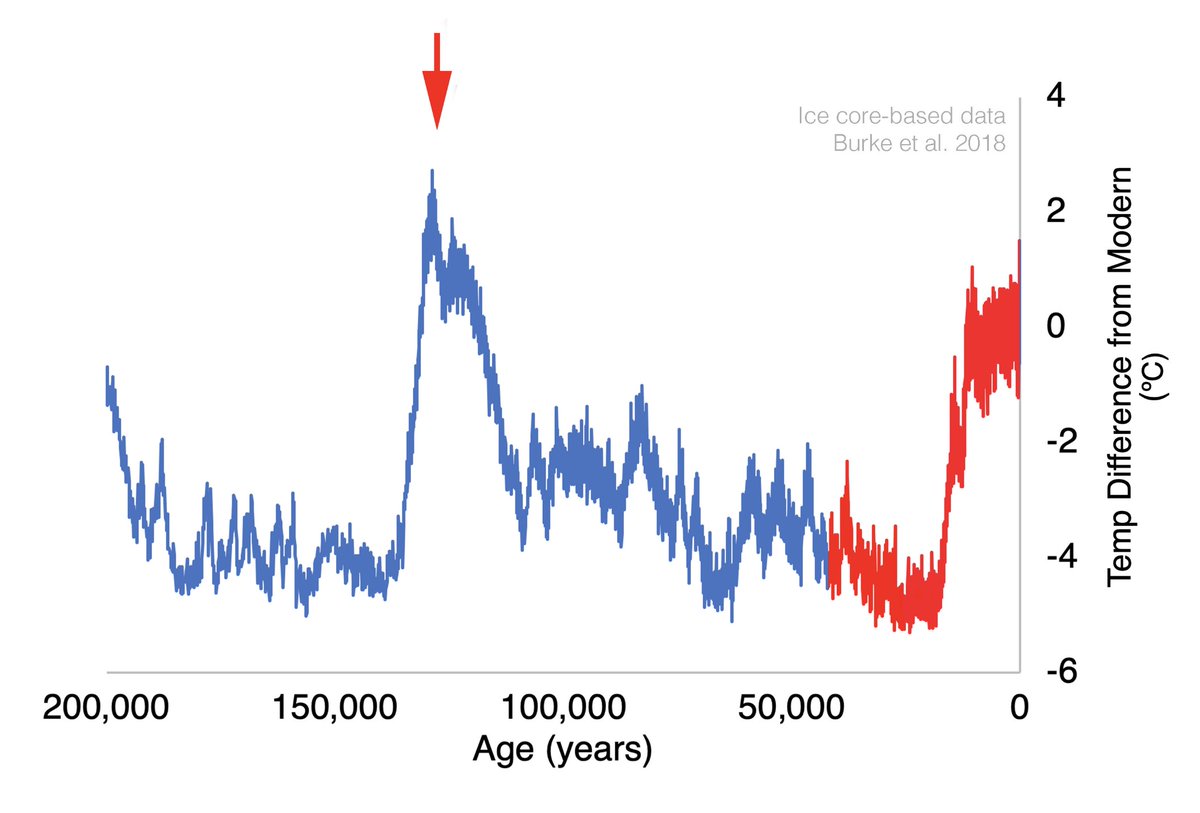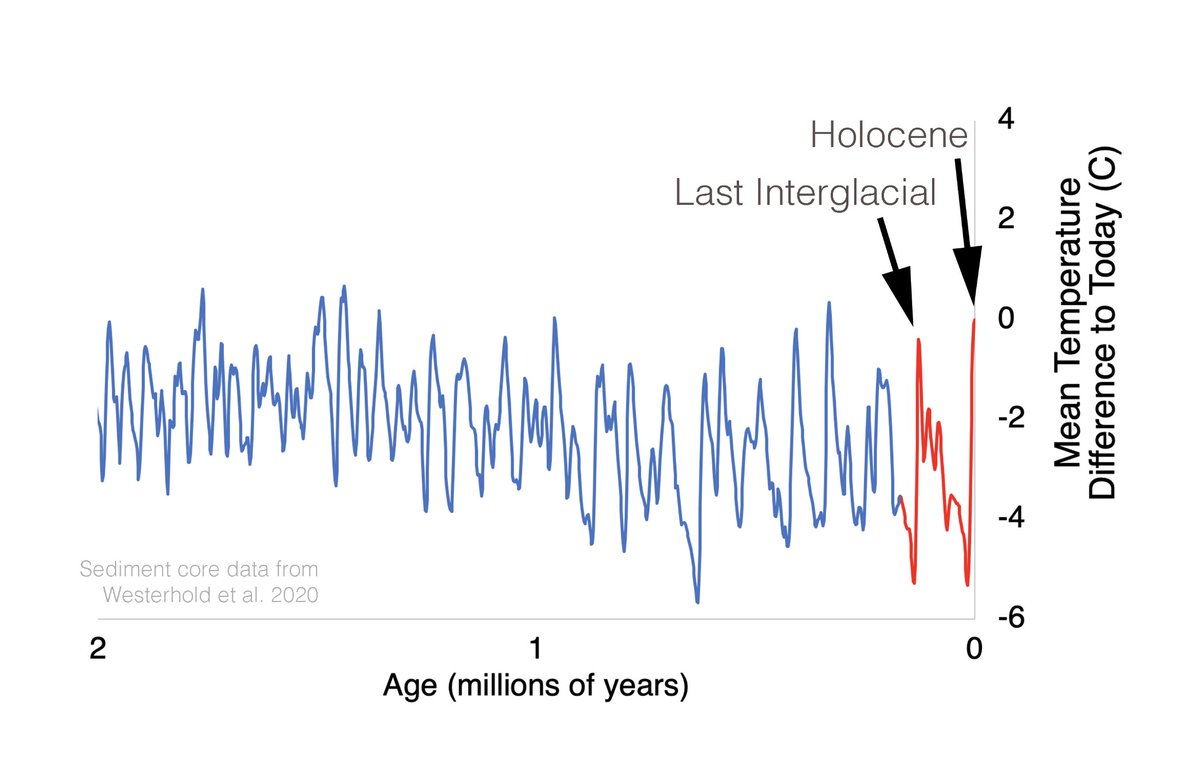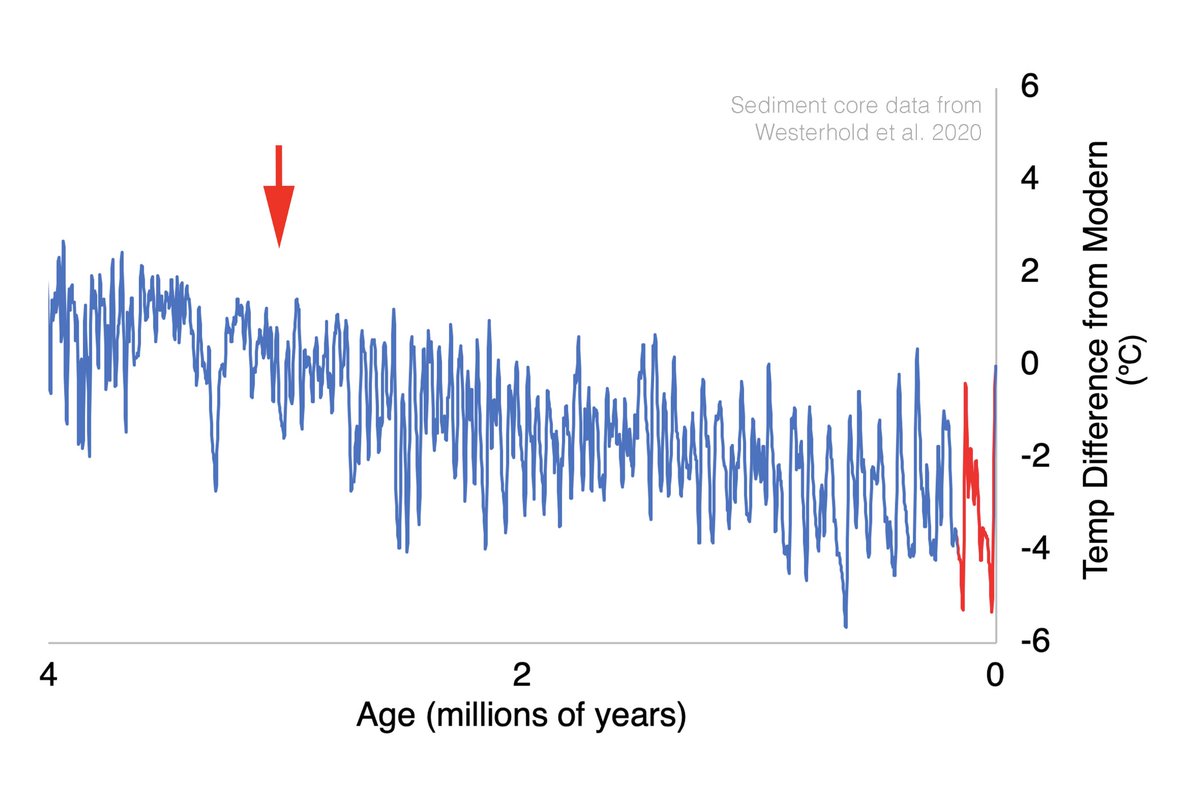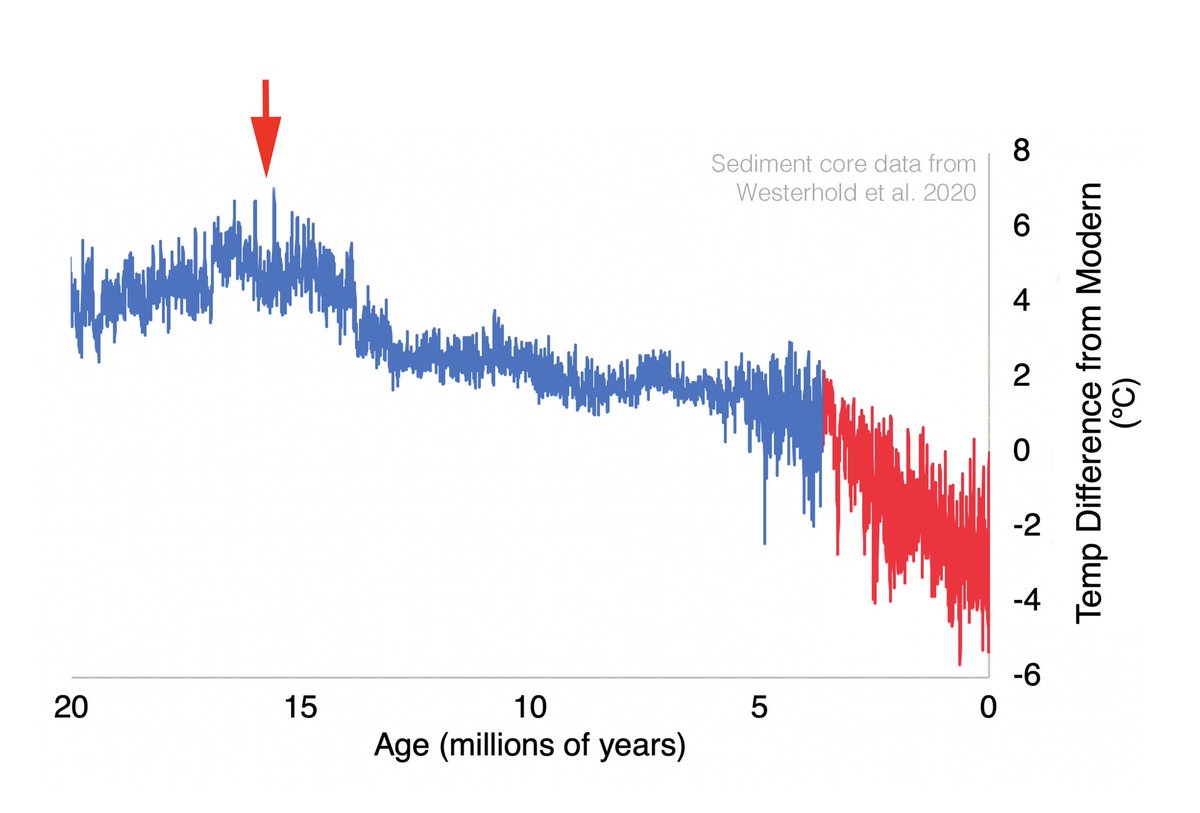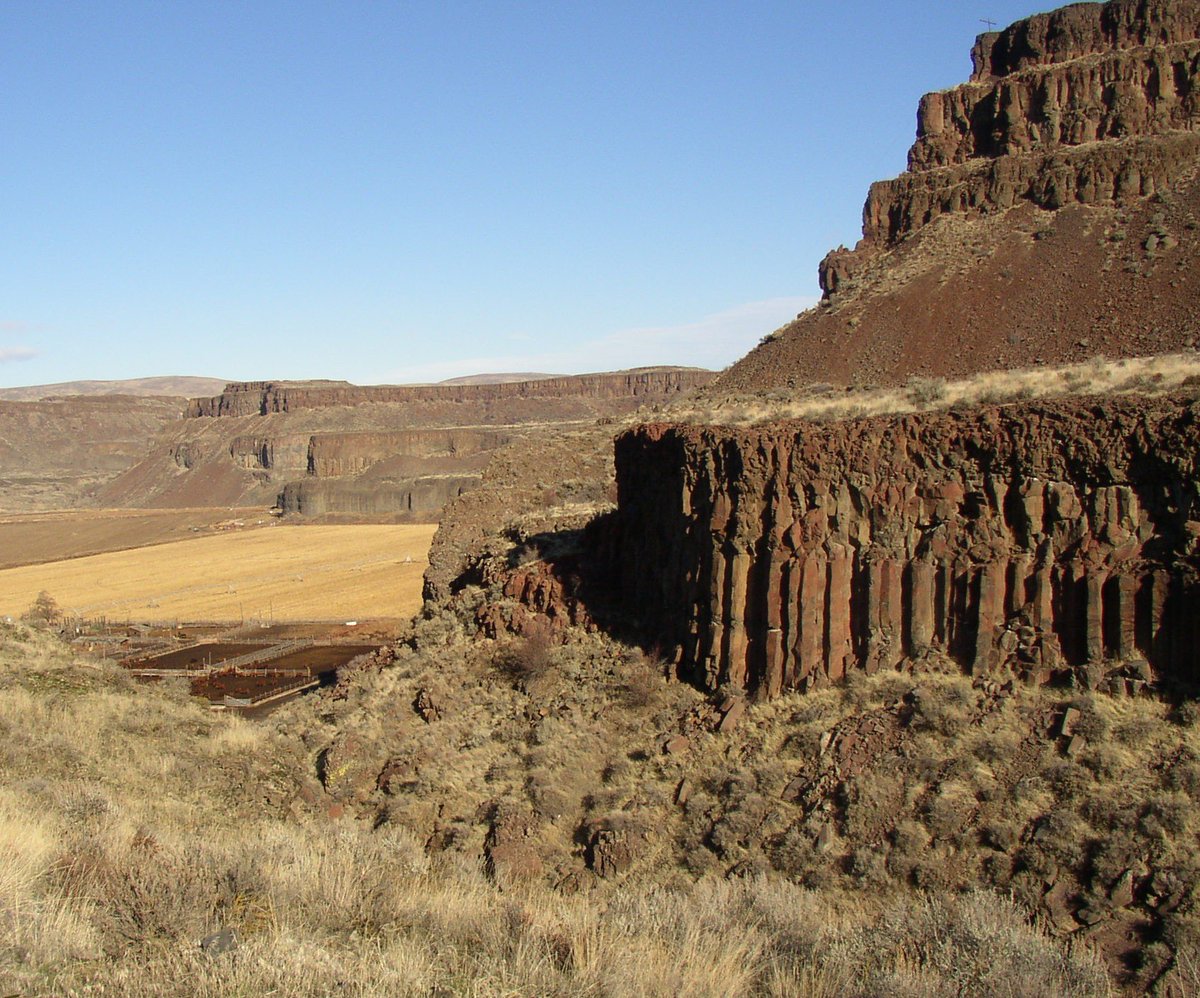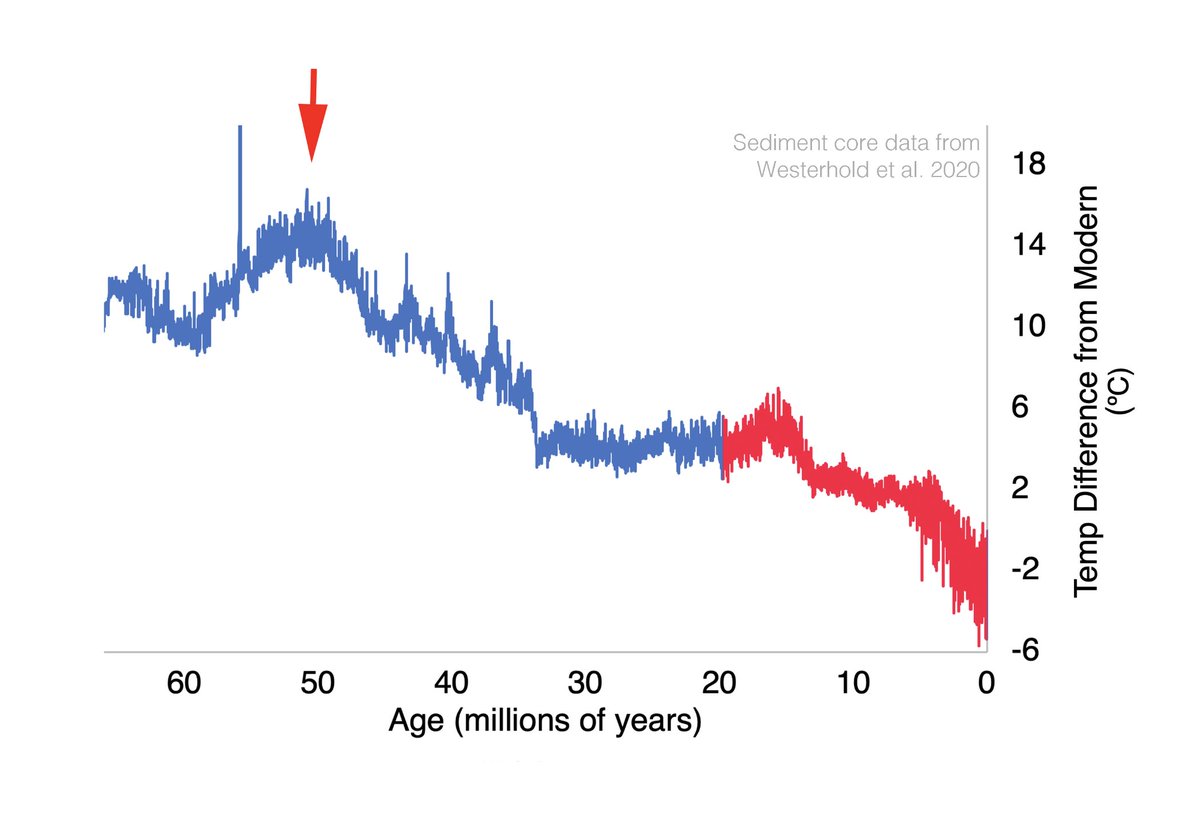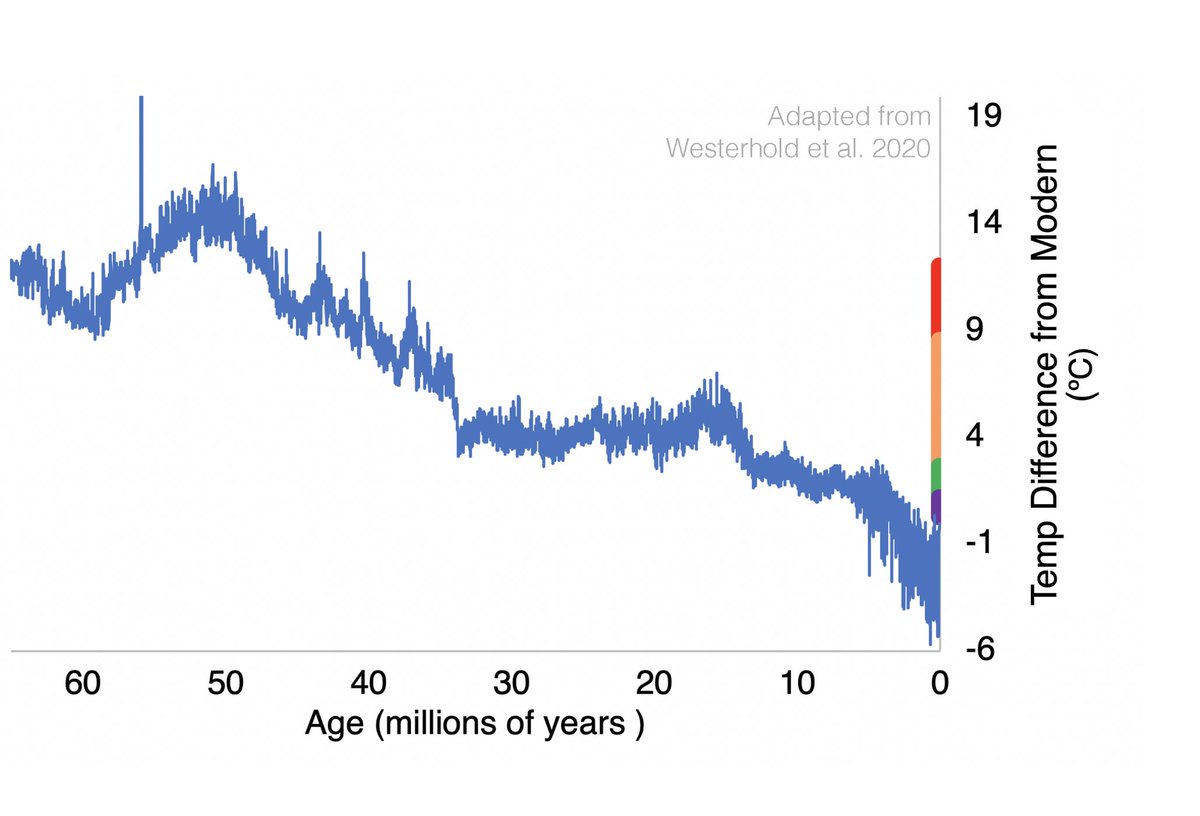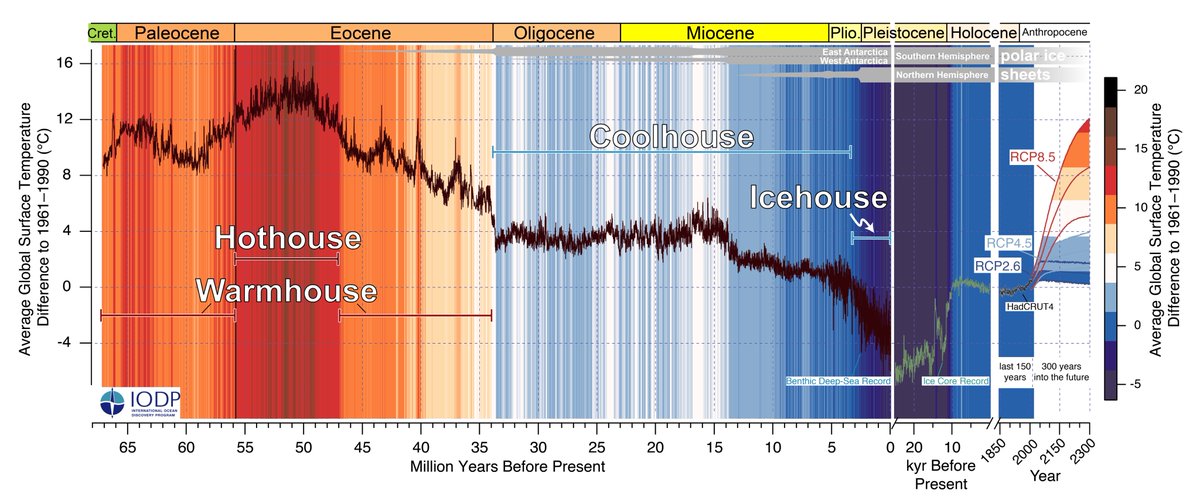Paleoclimatology, is the study of Earth's ancient climates. Taking the extreme long view it becomes unsettlingly apparent that Earth's climate is "an angry beast," as Columbia climate scientist Wally Broecker used to say, "And we are poking it with sticks" https://www.theatlantic.com/magazine/archive/2021/03/extreme-climate-change-history/617793/
Within recorded history, climate changes have been linked with the faltering of the Hongshan & Yangshao cultures, the Akkadian Empire, the Bronze Age, the Roman Empire, the Ptolemaic Empire, Ancestral Puebloans, the Khmer Empire, Classic Maya... But recorded history is nothing.
This is our immediate climate context: In red is the span of time that covers recorded history. Stable. But at the bottom of the slope is the depths of last ice age, when sea level was +400 feet lower, an Antarctica's-worth of ice covered North America & icebergs listed off Miami
But we merely live in the latest interglacial of an ice age world. Everything from previous graph is now in red, but if you go back 120,000 years the earth has emerged from the ice again, temps were similar to today (though warmer at the poles) & sea level was 20-30 feet higher
There are hippos & water buffaloes splashing in the Rhine, lions hunt forest elephants near Leipzig, & giant tortoises march through an Illinois unknown to humans. The Florida Keys is built from fossil coral reefs & shoals, & along w/ the lower 1/3 of Florida, is under the waves
In past 2.6 million yrs, planet has swung dozens of times between such warm, brief interglacial springtimes & deep glaciations. Swings are paced by wobbles of planet which bring more/less sunlight to North hemisphere summers, either stifling ice sheets or allowing them to swell
But waxing and waning of sunlight in the N hemisphere follows the gradual slope of a sine wave. The Ice Ages of the Pleistocene, on the other hand, end with all the jaggedness of an EKG. This is where carbon cycle feedbacks & the nonlinear dynamics of ice sheets come in.
Here's the last 2 million years, as the planet has swung between ~180 and ~280 ppm of CO2 and minor shifts in sunlight. The planet is extremely dynamic.
But when CO2 is high enough you can escape this glacial/interglacial world. Today we are outside of the range in which we evolved. To find an analog in Earth's past for our current atmosphere we have to go back over 3 million years to the Pliocene
This is much diff world. N and S America are separated by narrow straits where Panama should be & animals now iconic to S America, like big cats, llamas and tapirs, haven’t yet migrated from N America where they first evolved. Around now there are red pandas & rhinos in Tennessee
In the middle Pliocene CO2 was ~400 ppm, the planet as a whole was 2-4°C warmer, but the Arctic was an astonishing 10-15° warmer, with beaver-filled evergreen forests on the coast of the Arctic Ocean. Sea level was 70 feet higher than today.
If we keep CO2 at 400 ppm indefinitely, we will eventually get there https://www.nature.com/articles/s41586-019-1619-z
But with modern CO2 over 410 and rising, we've already passed the middle Pliocene, so even more ancient analogs are required for our strange world. We now heroically jump more than ten million years into the past.
Everything that has come before is in red, & we're now 16 million years deep into earth history. CO2 is ~500ppm and the planet is 4-8° warmer than today. There are swamp forests in Iceland, parrots in Siberia, and conifers on the coast of Antarctica. Sea level is 150 feet higher.
The warm spell was likely kicked off by volcanic CO2 from the Columbia River Basalts, rocks that now span a vast region in the northwest US, but were once overflowing rivers of lava. They were of a rare, catastrophic class of volcanic eruptions called Large Igneous Provinces
Though the topography of Antarctica, and ocean circulation in Southern Ocean were subtly different, the ice sheet in the Miocene seemed responsive to small changes in CO2--losing what would be 30-80% of the modern Antarctic ice sheet over thousands of years.
A controversial process called Marine Ice Cliff Instability (MICI) might have been at work, wherein Antarctica wasn't slowly shedding ice in response to warmth, but collapsing like a stack of dominoes. It's uncertain whether MICI could be in our future
With much less ice on planet & deserts mostly replaced by forests & vegetation, planet was darker and absorbed more heat. In the very long-term our planet may similarly change color. Changes in geography/topography account for some Miocene warmth too but most warming was from CO2
But in the worst-case CO2 emissions scenarios for our future (a very avoidable path, and one that we have no reason to go down) even the Miocene isn't an extreme enough analog. Now it's time for a tremendous leap 40 million years further into the the geologic past.
Everything described so far (16 million years of climate change) is now crowded to the right side of the graph. As CO2 climbs and the planet warms we end finally in the Early Eocene 50 million years ago--one of the hottest periods in the history of animal life. CO2 is 600-1400ppm
A small woodland creature that would become ancestor to all whales prances through forests of a Pakistani archipelago. India is adrift in the Indian Ocean. And there are no ice sheets on the planet.
Antarctica instead hosts monkey puzzle trees & marsupials. There are rainforests in the Arctic. https://twitter.com/PeterBrannen1/status/1026587486485667840
Climate modelers have long struggled to reproduce a world this hot. Historically models have had to ramp CO2 to over 4,000 ppm to reproduce this feverish world. But the models are catching up.
It could be that the Earth grows increasingly sensitive to CO2 as it warms https://news.umich.edu/study-of-ancient-climate-suggests-future-warming-could-accelerate-as-carbon-dioxide-levels-rise/
It could be that some clouds begin to break apart after some CO2 threshold, inviting dramatically more sunlight to hit and warm the ocean. https://www.quantamagazine.org/cloud-loss-could-add-8-degrees-to-global-warming-20190225/
Perhaps other powerful greenhouse gases, like methane and nitrous oxide awoke from the worldwide swamps, and warm, moldering soils of this greenhouse world.
Taking the whole sweep of the age of mammals into view it now becomes apparent just how radical the ongoing, modern experiment on the climate really is. The vertical lines at the end of the graph are the full range of IPCC warming scenarios to 2300
The rate of potential future warming is nearly unsurpassed in Earth history, even in many of major mass extinctions--extinctions caused largely by volcanic CO2. We don't need to go down this path, but will require stopping--even reversing all carbon emissions in next few decades.
Graphs adapted from Burke et al., 2018 https://www.pnas.org/content/115/52/13288 and Westerhold et al., 2020 https://science.sciencemag.org/content/369/6509/1383 which was released with this wonderful and alarming graphic, making all of the same points above
Lots of great paleoclimate writing out there from @HowardYLAPE @alexwitze @voooos @themadstone @sarahkaplan48 & others. For the Holocene this @Annaleen piece (& new book!) has much more subtle & up-to-date discussion of how climate has influenced societies https://www.theatlantic.com/ideas/archive/2021/01/seductive-appeal-urban-catastrophe/617878/

 Read on Twitter
Read on Twitter
